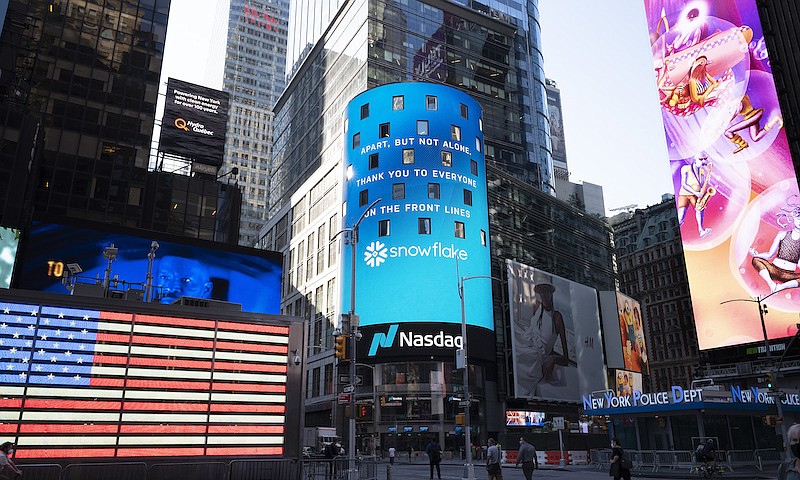Another in a growing list of new stock offerings hit the market last Wednesday, setting a record for the biggest software IPO in history. Cloud computing company Snowflake (SNOW) debuted in grand fashion, more than doubling during the first few minutes of active trading. By any traditional valuation standard, the price was stratospheric. Time will tell if it turns out to be justified, but the action was representative of the insatiable demand for new tech offerings and the deluge of retail investors chasing the market.
The company was founded in 2012 by successful serial entrepreneur Frank Slootman, whose reputation no doubt added rocket fuel to the blastoff. But it was the interest of another, more famous and notoriously non-techy investor by the name of Warren Buffet that really ignited the booster. Press reports confirmed that the Oracle of Omaha had agreed to purchase $250 million of the stock in the initial offering and another $500 million in a private transaction after trading began. That tidbit, plus word that CRM software company Salesforce had also committed $250 lit the candle.
An initial public offering or IPO is the mechanism by which a private company "goes public" or sells shares to public investors. Company owners and insiders like founders and institutional investors, who made private investments to start the firm agree, to sell some of their shares in what is called a primary transaction. This allows the private holders to cash out and take some of their profits, but also creates a secondary market in which the now-public shares change hands. These secondary trades occur on the stock exchanges, with prices determined strictly by supply and demand. The composite of all these secondary trades is what you see reflected in broad indices like the S&P 500 or the Russell 2000.
The initial offering price is determined through an intensive process of marketing the offering to institutions like mutual funds, hedge funds and large pension plans, as well as wealthy individuals. Gauging interest and accumulating informal offers to purchase allows investment banks to set the starting price slightly below the expected market price once the secondary trading begins. During normal times, stock prices following an IPO can be volatile but generally settle in near (or often below) the IPO price. It is during periods of exceptional exuberance that newly minted stocks reach for the sky in early trading.
Enter Snowflake. The company and its bankers originally believed a price around $80 per share was reasonable. By the day of the IPO, indications of interest led them to set the opening price at $120. That is the price Mr. Buffet paid.
As trading opened on Wednesday morning, buyers were lined up around the virtual block clamoring for a piece of the action and shares briefly changed hands at $319 or 165% above the IPO price, before falling back around $230 to close the day. Pity the poor Robinhood trader in his mom's basement who bought high and sold low four hours later. Call it tuition.
It remains to be seen whether this particular stock proves worthy of such lofty valuation, but it is indicative of the froth in the new issue market so far in 2020. Historically, returns on IPOs over the following five and 10 years underperform the S&P 500. When the price is inflated at the opening, the climb is much tougher, since return is a function of the purchase price. Potentially more significant is the fact that excessive IPO valuations are often another sign of unsustainable market levels, as in 1999 and 2008. This song could be different, but the words seem to rhyme.
Christopher A. Hopkins, CFA, is a vice president and portfolio manager for Barnett & Co. in Chattanooga.
